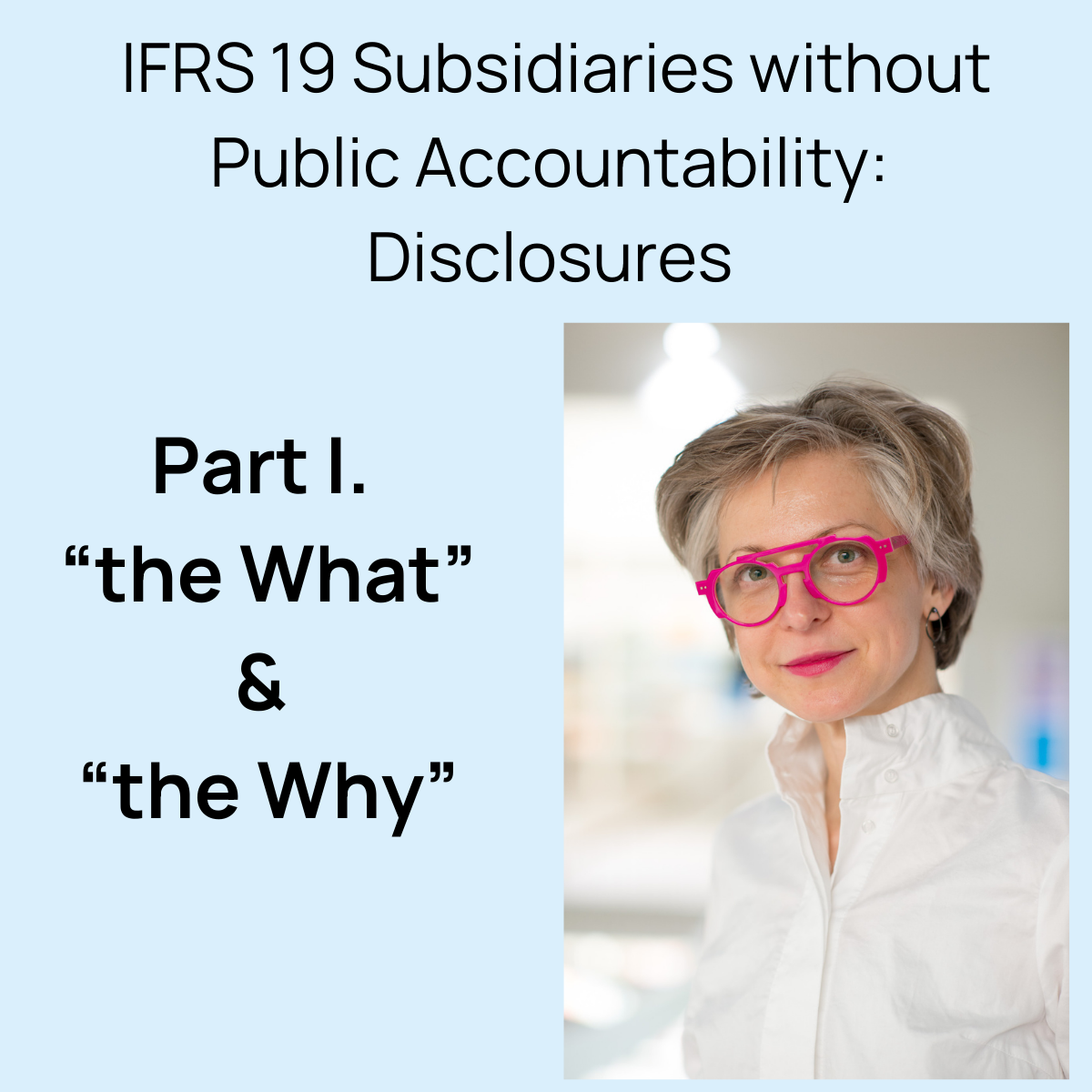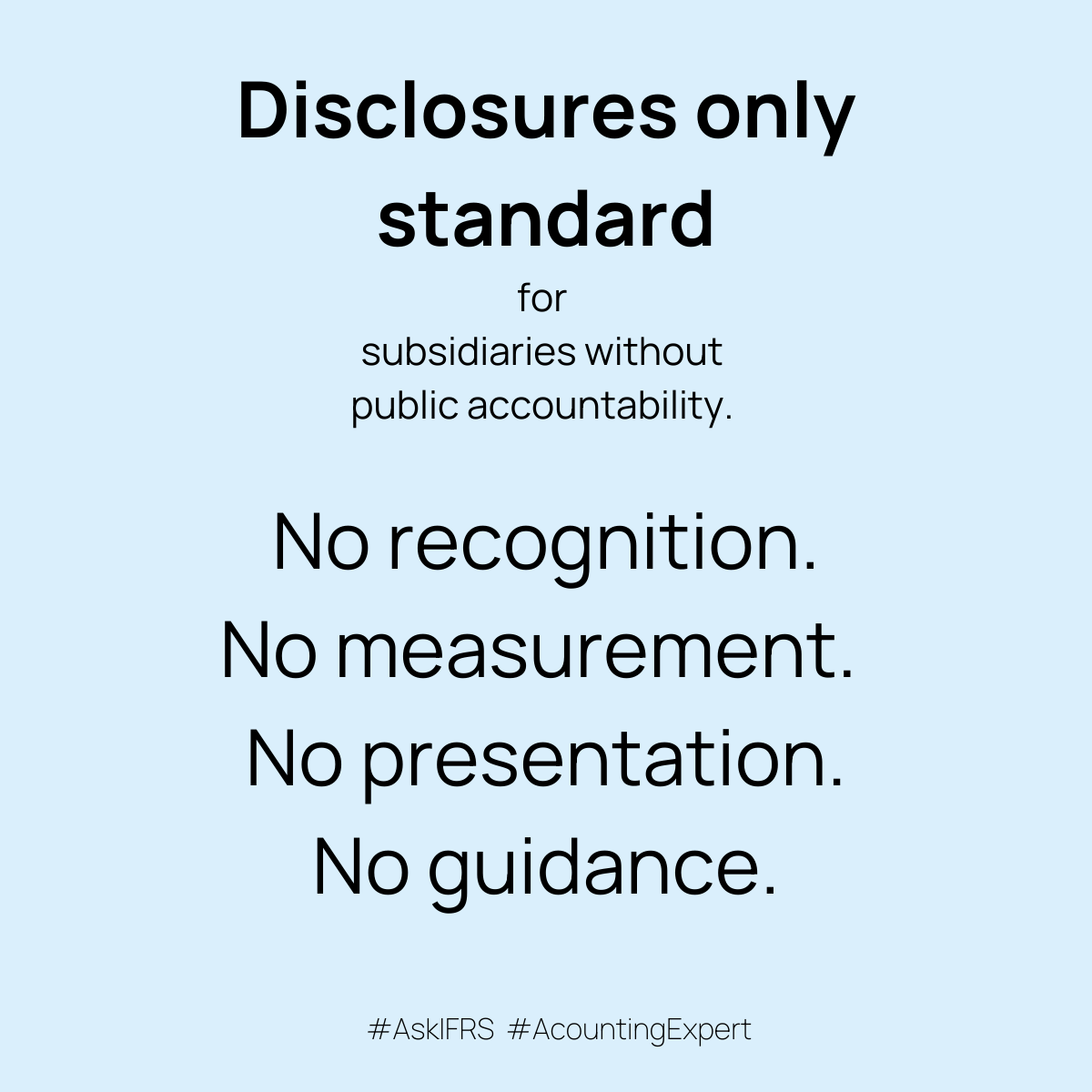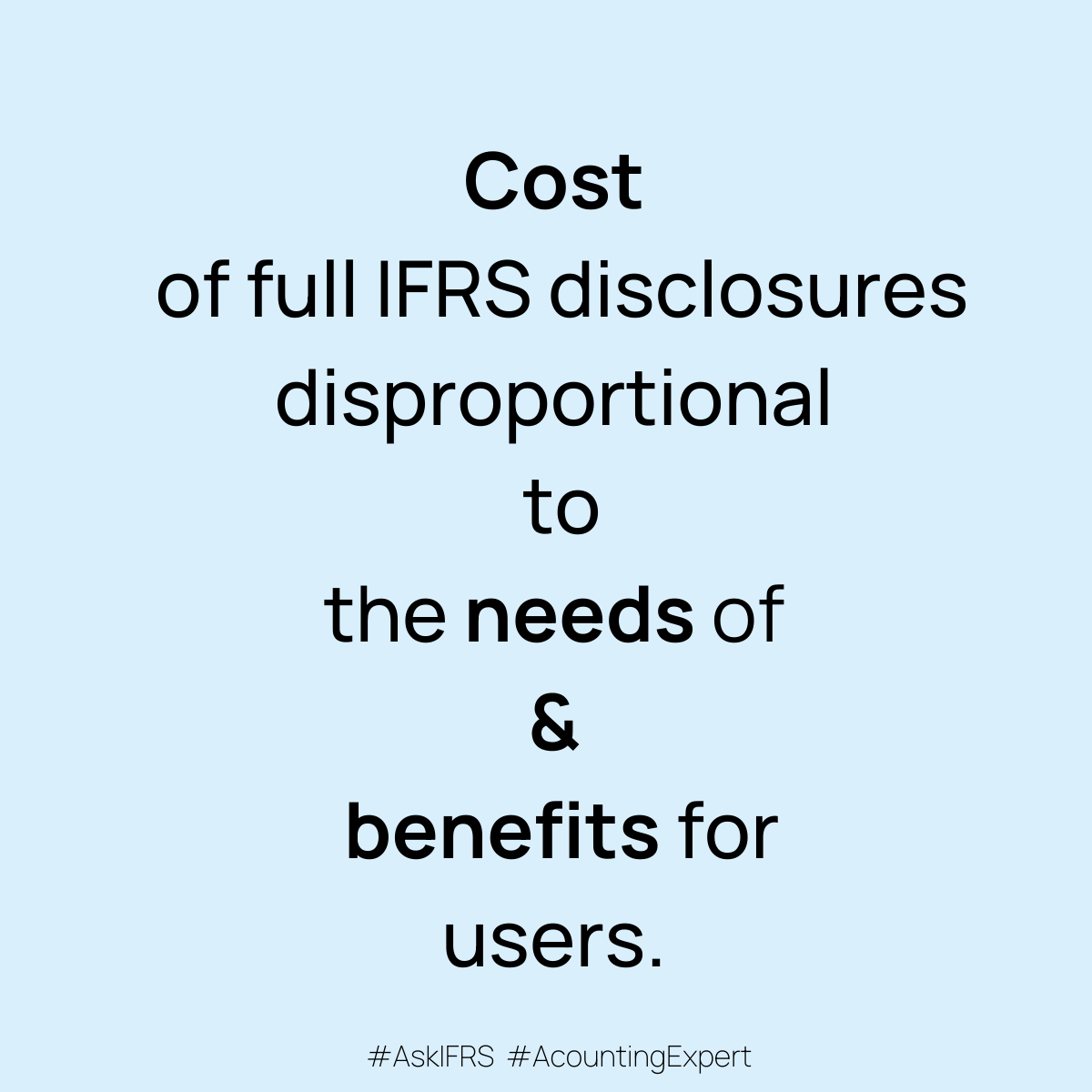IFRS 19 Subsidiaries without Public Accountability: "The Why + the What"
This is a disclosure only stardard. No recognition. No measurement. No presentation.
IFRS 19 Subsidiaries without Public Accountability: "The Why + the What"
Subsidiaries without public accountability are permitted to use reduced disclosures when preparing IFRS reports for consolidation purposes of their IFRS parent.
The standard IFRS 19 is effective from January, 1st 2027.
Earlier, voluntary application possible from the issuance of the standard, May 2024.
IFRS 19 is “an innovative project aimed at reducing costs in the ecosystem.”
For a short overview - and busy readers - I have selected some key points to bear in mind.
What was the problem to be resolved?
🔹 Complications in preparing financial statements of subsidiaries.
Because consolidated financial statements must be prepared using uniform accounting, subsidiaries were required to report under IFRS to their parent.
In order to unify the local preparation base - local GAAP or the IFRS for SMEs (Small & Medium Entities) - with the one of the parent, subsidiaries had to often prepare complicated reconciliations (reporting “bridges” ♾️ ).
In addition, full IFRS disclosures were disproportionate to the needs of the users of subsidiaries` financial statements.
The goal was to get to the position enabling subidiaries to use their reporting package as its base for preparing of both:
🔹 its IFRS fiancial statements for consolidation purposes and, 🔹 financial statements in accordance with the local gaap.
To achieve that position disclosure requirements had to be significantly reduced.
How to reduce the disclosure requirements?
From the “the big book” of full IFRS disclosures to IFRS 19.
The STARTING POINT:
was the "IFRS for SMEs", which already contains principles for reducing disclosures.
Those principles are based on needs of the users. For example: cash flows or understanding measurement uncertainty.
The same principles, tested and reviewed, were used when developing IFRS 19.
The track between the full IFRS disclosures and IFRS 19 can be accessed through the IASB website (-> Projects -> IFRS 19).
If you can remember only one thing about the IFRS 19, it shall be this one:
This is a DISCLOSURE ONLY standard.
Excluded from the scope of IFRS 19 are:
IFRS 8 Operating Segments IFRS 17 Insurance Contracts and IAS 33 Earnings per Share
Eligible entities shall apply full disclosures required under those standards instead.
Furthermore, an eligible entity is allowed to apply the principle of materiality when electing relevant disclosures under IFRS 19.
⏩ In the Part 2. of this Mini-Series I will take a look at:
▪️ "the Who" (is eligible) and
▪️show you some examples of disclosures in accordance with the IFRS 19.


